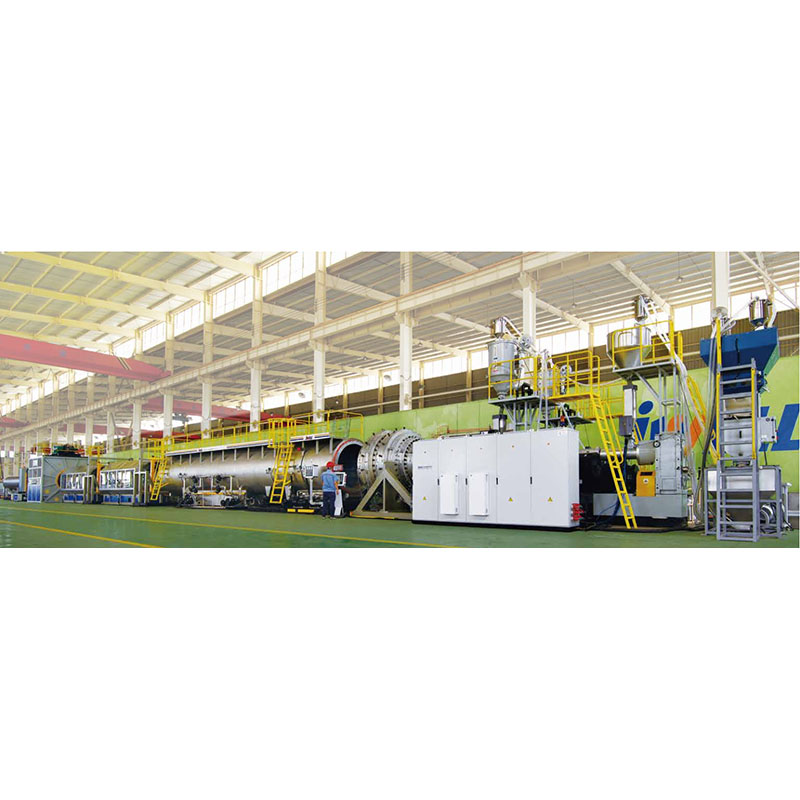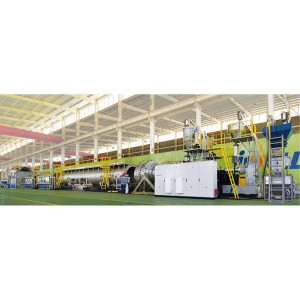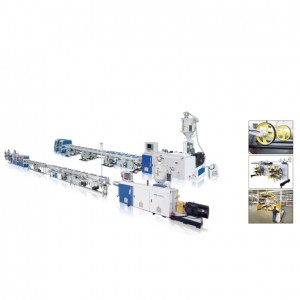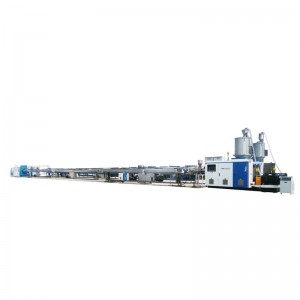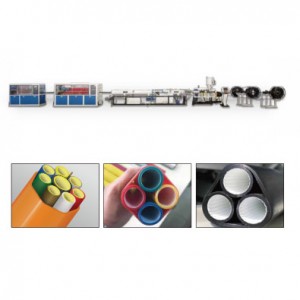Large Diameter HDPE Pipe Extrusion Line
Main Technical Parameter
| Model | Pipe Spec (mm) | Extruder | Main Power(kw) | Output (kg/h) |
| JWEG-800 | ø400-ø800 | JWS-H 90/42 | 315 | 1000-1200 |
| JWEG-1000 | ø500-ø1000 | JWS-H 120/38 | 355 | 1200-1400 |
| JWEG-1200 | ø630-ø1200 | JWS-H 120/38 | 355 | 1200-1400 |
| JWEG-1600 | ø1000-ø1600 | JWS-H 150/38 | 450 | 1800-2000 |
| JWEG-2500 | ø1400-ø2500 | JWS-H 120/384120/38 | 355+355 | 2200-2500 |
Note:The specifications are subject to change without prior notice.
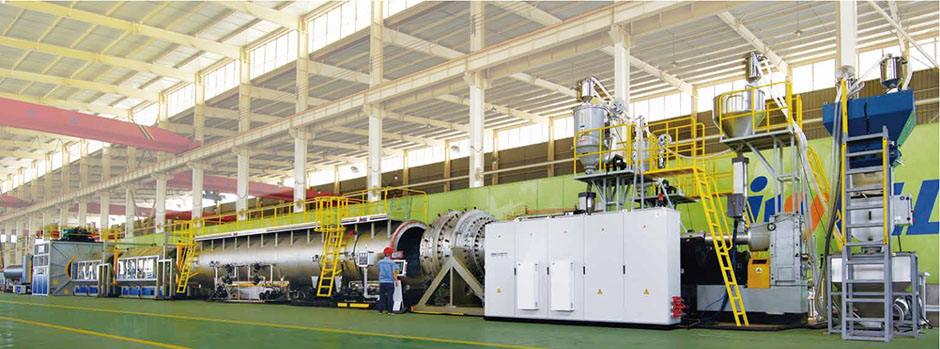
Product Description
HDPE pipe is a type of flexible plastic pipe used for fluid and gas transfer and is often used to replace ageing concrete or steel mains pipelines. Made from the thermoplastic HDPE (high-density polyethylene), its high level of impermeability and strong molecular bond make it suitable for high pressure pipelines. HDPE pipe is used across the globe for applications such as water mains, gas mains, sewer mains, slurry transfer lines, rural irrigation, fire system supply lines, electrical and communications conduit, and storm water and drainage pipes.
Large diameter HDPE pipes are tough, lightweight, shock and chemical resistant. They offer installation economy and long service life. These pipes are available in standard lengths of 3, 6, 12 and 14m. Special pipe lengths can be produced to meet almost any need.
HDPE pipe is a flexible plastic pipe made of thermoplastic high-density polyethylene widely used for low-temperature fluid and gas transfer. In recent times, HDPE pipes got their extensive uses for carrying potable water, hazardous wastes, various gases, slurry, firewater, stormwater, etc. The strong molecular bond of HDPE pipe materials helps it to use for high-pressure pipelines. Polyethylene pipes have a long and distinguished service history for gas, oil, mining, water, and other industries. Due to its low weight and high corrosion resistance, the HDPE pipe industry is growing tremendously. In the year 1953, Karl Ziegler and Erhard Holzkamp discovered high-density polyethene (HDPE). HDPE pipes can work satisfactorily in a wide temperature range of -2200 F to +1800 F. However, the use of HDPE Pipes is not suggested when the fluid temperature exceeds 1220 F (500 C).
HDPE pipes are made by the polymerization of ethylene, a by-product of oil. Various additives (stabilizers, fillers, plasticizers, softeners, lubricants, colorants, flame retardants, blowing agents, crosslinking agents, ultraviolet degradable additives, etc.) are added to produce the final HDPE pipe and components. HDPE pipe lengths are made by heating the HDPE resin. It is then extruded through a die, which determines the diameter of the pipeline. The Pipe wall thickness is determined by a combination of the die size, speed of the screw, and the speed of the haul-off tractor. Usually, 3-5% carbon black is added to HDPE to make it UV resistant, which turns HDPE pipes into black in color. Other color variants are available but usually not used frequently. Coloured or striped HDPE pipe is usually 90-95% black material, where a colored stripe is provided on 5% of the outside surface.
Application
● Gravity and low pressure applications up to 1.5bar internal pressure.
● Surface water drainage & attenuation.
● Culverts.
● Fouls sewers.
● Sea or river outfalls.
● Pipe rehabilitation and relining.
● Landfill.
● Manholes.
● Marine pipelines.
● Below and over ground applications.
Features & Benefits
● Lightweight and impact resistant.
● Corrosion and chemical resistant.
● Flexible and fatigue resistant.
● Installation is cost effective saving time and money against alternatives.
● Ability to manufacture from 2kN/m2 to 8kN/m2 (standard strengths are 2kN/m2 & 4kN/m2).
● Various lengths up to 18m.
● Sizes from 700mm to 3000mm.

